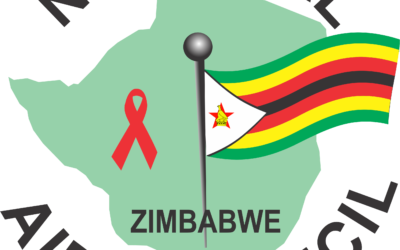
[ad_1]
Indigenous people are leading a food sovereignty movement to restore their ancestrally informed food systems. The revitalization of songs, dances, ceremonies, stories, and methods relating to the planting and harvesting of food species is at the heart of our efforts, with concurrent attention to the inseparable issues of food access and food injustice. We are striving to restore what colonialism has and continues to take from our territories and kitchen tables, but justice is not possible without the reparation and restitution of our territories.
When we talk about food sovereignty, we are talking about Land Back.
For Indigenous people who practise agriculture, seed and garden stewardship is a site of decolonial governance. It is an act of mutual aid, keeping alive ancestral economies through the trading, sharing, and gifting of seed, food, medicines, and teachings. It is a partner to abolitionism, sustaining sustenance systems of non-interference and community care that persist in spite of the violently punitive criminalization of our bodies and those of our Black and Brown relatives. It is a reminder of ways of life that predate police and prisons, pesticides and pipelines, and it is a promise that these worlds are possible again. It is a refusal of the homogeneity and hegemony of white supremacist food production.
It is a meditative process of remembering and rewriting and rerooting ourselves and our food relatives in a society that wants to displace us and erase us. It is a healing thread that connects us forward and backwards intergenerationally as we imagine our ancestors and descendants peeling back ears of the same flint corn and cracking open pods of the same speckled beans. It is a ceremonial practice of time-weaving futurisms: when we plant and harvest, we tend to something that we might not live to see flourish or benefit us, whether it be the offerings of that year’s yield or the years-long improvements we’ve made to a seed variety’s genetic stability.
It is a complex and loving act of intertribal decision-making: Which species need our attention most this year? How do we support these varieties in adapting to our changing climates? Which relatives are being overharvested? We are first and foremost humble caretakers of the food sources that sustain us. Some of us have never even tasted the seeds we steward due to their rarity.
Barriers to land, barriers to foodDue to historical and ongoing barriers, Indigenous people living on- and off-reserve face challenges accessing land for self-determined food sovereignty pursuits.
The period from the late 19th century to the early 20th marked an era of informal anti-Indigenous federal government policies collectively known as the pass and permit system: among other harms, these policies divided large community crops into small on-reserve family plots, deterred settlers from hiring or purchasing from Indigenous farmers, and prohibited Indigenous people from farming, selling produce, or purchasing farming equipment without a permit. In the reserve establishment era, many communities were forced off of the more arable land in their territories onto less viable soils, and these communities continue to face unsuitable growing conditions.
- Chamisa under fire over US$120K donation
- Mavhunga puts DeMbare into Chibuku quarterfinals
- Pension funds bet on Cabora Bassa oilfields
- Councils defy govt fire tender directive
Keep Reading
Today, band councils are preoccupied by urgent issues of limited and inadequate housing, so crop cultivation parcels — especially those for agricultural activities that are not revenue generating — are a low priority. The cost to lease or purchase on-reserve land for agricultural activities can be too high for individual community members. In some communities, state-designated reserve lands are too small to support agricultural initiatives. In others, reserve lands are too hazardous to use to grow food or seed due to soil and water contaminants produced by extractive and manufacturing industries, the operations of which are strategically situated in close proximity to Indigenous communities after being rejected by predominantly white neighbourhoods.
In many cases, multiple factors of land sovereignty obstruction collide. The Crown still holds title to reserve lands in trust for government-recognized bands, and band councils — the state-imposed governance structure instituted to undermine communities’ traditional governance systems — manage and administer reserve lands. Conflicts in decision-making occur in this colonial context of settler-state interference and capitalism, which destabilizes ancestrally informed food practices that exist outside of formal market economies. Indigenous communities aren’t simply underresourced: we are intentionally exploited and steamrolled to facilitate the colonial project called Canada. As the sign held up by Navajo scholar Moroni Benally at a rally said, “Indigenous people are not vulnerable they are targeted.”
As all land and waters within the colonial borders of Canada are Indigenous territories. Treaties were not based on land cession, and furthermore the very treaties leveraged against Indigenous people as legitimacy for non-Indigenous private property rights are the same treaties signed under duress due to Dominion- and imperialist-orchestrated starvation. Food and hunger have been deployed against Indigenous people as a weaponized tool of coercion and land seizure prior to and during the inception of the Canadian state.
Thus, the ongoing impacts of environmental racism and non-consensual development extend far beyond reserve boundaries for Indigenous people. Government statistics show that over half of Indigenous people live off-reserve today. Those living off-reserve — whether due to colonial interruptions to community connections, non-reserve community, or territorial connections; forced displacement; or lack of employment or education opportunities, gender-affirming supports, housing, or healthcare access — face the hypercapitalist competition of the real estate market and the agricultural-industrial complex.Compounding this are the altered landscapes of so many Indigenous homelands, with skyscrapers, warehouses, municipally regulated green spaces, police surveillance and brutality, self-entitled cottagers, overpriced housing and services in increasingly gentrified neighbourhoods, and the offbeat rhythms of unrecognizable seasonal cycles resulting from the climate crisis. Where subversively reclaiming growing space is possible, it is not without carceral consequences, and where the land remains a little less altered, it is sold at a price only accessible to people with generational and extractively acquired wealth.
In the necessary vision of Land Back, Indigenous food justice looks like planting and harvesting on our ancestral homelands in their returned and restored self-determining glory.
Commodification of Indigenous foodways and appropriation of Land BackDue to the tireless activist labour of Black and Brown anti-racism organizers, we’ve seen increased visibility of calls for racial justice and decolonization as well as for critiques of mainstream environmentalism’s white supremacy problem. In response, non-Indigenous leaders have voiced commitments to decolonizing inherently colonial institutions, co-opting the concept of decolonization in the process.
Settlers are collectively purchasing land and permitting Indigenous access to the land, falsely calling it a contribution to the Land Back movement. Settler farmers with organic operations are seeking access to Indigenous gardening knowledge and Indigenous seed varieties, falsely calling it an act of Indigenous solidarity. “A lot of non-Indigenous people [are] wanting to be us rather than doing the work of being in good kinship,” states scholar and Sisseton Wahpeton Oyate citizen Kim Tallbear.
We are vying for hunting tags alongside settlers, watching white racists trophy hunt our sustenance while our Elders’ bodies grow stiff before they can teach us their ways.While green colonialism is diluting our efforts towards true justice, we continue to battle the imposition of colonial market-based solutions to our food crises. Indigenous people commercializing their food sovereignty efforts are not to be vilified: participating in the food production market to feed families and communities is a contemporary translation of ancestral activities.
The issue is systemic and lies in the fact that many communities have only this alternative to sustaining their efforts through precarious fundraising models that drip-feed conditional funds without regard for the stolen wealth and privilege that land dispossession generates. Governmental and philanthropic bodies overwhelmingly offer prescriptive solutions and resources centred on reforming Indigenous food practices into revenue-generating enterprises. This undercuts Indigenous people’s spiritual and cultural contracts with the land, which can involve the non-monetization of food species and slower, more intimate processes of food production. These charitable and loan-based Indigenous food funding programs perpetuate saviour narratives of development or aid while circumventing settler accountability to justice-centered land restitution.
Land dispossession and forced assimilationFor Indigenous people, food sovereignty is more than the right to define and produce our own food; it is the set of cultural laws and spiritual responsibilities that inform our relationships to our territories and the species that nourish us. Out of fierce love and commitment to these responsibilities, we continue to uphold these relationships against all colonial odds.
From moose to lobster, we are risking our lives to insist on the legitimacy of our intimate knowledge of conservation, land use, and species management. We are planting gardens in waste sites. We are stewarding culturally significant seeds on leased balconies. We are vying for hunting tags alongside settlers, watching white racists trophy hunt our sustenance while our Elders’ bodies grow stiff before they can teach us their ways. We are bartering with our aunties for one of the season’s scarce cans of fish, asking ourselves if it’s time we stop taking from our swimmer relatives, because water mismanagement, the fishing industry, and global warming won’t.
We are in parks patrolled by city workers and citizens that deem us suspect, harvesting wild edibles who have known us and our reciprocal ways since before we knew what parks were. We grieve for deforested traplines, not just for the loss of nourishment and applied knowledge, but as mutual witnesses to the violence against sovereign species we are spiritually and politically tasked to protect. We ask ourselves: Did we do enough to stop this? What would our ancestors think? And what will be left for our children to know and to taste?
We are resilient, adaptable, innovative, and persistent. We have been forced to adjust to the degradation of the very ecosystems and knowledge systems that comprise our ways of life. Though we try, we know we cannot culture camp our way around territorial dispossession. From the deception of the reconciliation industry to the expropriation of the food justice movement, the fallacy of food sovereignty without land sovereignty is a further injustice to Indigenous people.
Decolonization is nothing if not about land restitution and land reparations. –ricochet.media
[ad_2] Source link









